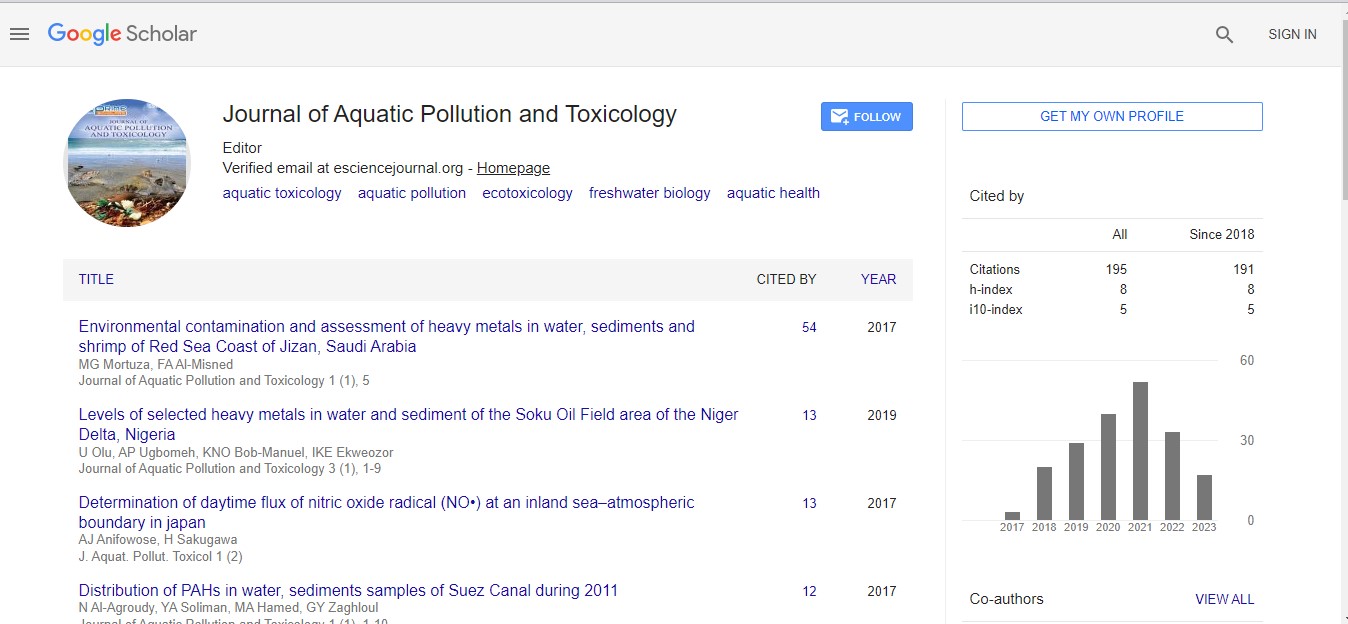Sushma Scindia*
Department of Environmental Studies, Barkatullah University, Bhopal, India
- *Corresponding Author:
- Sushma Scindia
Department of Environmental Studies
Barkatullah University, Bhopal, India
E-mail: sushmascindia64@rediffmail.com
Received: January 06, 2021; Accepted: January 20, 2021; Published: January 27, 2021
Citation: Scindia S (2021), Impact of toxins on health. J Aquat Pollut Toxicol. Vol. 5 No. 5: 4
Toxicology is the have a look at of poisons, or, extra comprehensively, the identity and quantification of damaging consequences related to exposures to bodily dealers, chemical materials and different conditions. As such, toxicology attracts upon maximum of the primary organic sciences, scientific disciplines, epidemiology and a few regions of chemistry and physics for facts, studies designs and methods. Toxicology levels from primary studies investigations at the mechanism of motion of poisonous dealers thru the improvement and interpretation of fashionable exams characterizing the poisonous residences of dealers. Toxicology offers essential facts for each remedy and epidemiology in knowledge aetiology and in offering facts as to the plausibility of found institutions among exposures, inclusive of occupations, and disorder. Toxicology may be divided into fashionable disciplines, inclusive of medical, forensic, investigative and regulatory toxicology; toxicology may be taken into consideration through goal organ machine or method, inclusive of immunotoxicology or genetic toxicology; toxicology may be offered in practical terms, inclusive of studies, trying out and hazard assessment.
The genome does now no longer have the potential to hold the codes of an array of antigen receptors enough to understand the variety of antigens that may be encountered. The repertoire of specificity develops through a method of gene rearrangements. This is a random method, for the duration of which numerous specificities are introduced about. For non-carcinogenic chemicals, protection elements have been delivered to catch up on uncertainties withinside the toxicology data (that are derived commonly from animal experiments) and of their applicability to large, heterogeneous human populations. In doing so, endorsed or required limits on secure human exposures have been commonly set at a fraction (the protection or uncertainty element approach) of the publicity stages in animals that would be sincerely documented because the no found damaging results level (NOAEL) or the bottom found damaging results level (LOAEL). It turned into then assumed that so long as human publicity did now no longer exceed the endorsed limits, the dangerous residences of chemical materials might now no longer be manifest.
For many forms of chemicals, this practice, in quite subtle form, maintains to nowadays in toxicological hazard assessment.
Normal immune effector characteristic and homeostatic law of the immune reaction relies upon lots of soluble products, recognized together as cytokines, that are synthesized and secreted through lymphocytes and through different mobileular types. Cytokines have pleiotropic results on immune and inflammatory responses. Cooperation among one of a kind mobileular populations is needed for the immune reaction—the law of antibody responses, the buildup of immune cells and molecules at inflammatory sites, the initiation of acute section responses, the manage of macrophage cytotoxic characteristic and lots of different techniques vital to host resistance. These are inspired through, and in lots of instances are based upon, cytokines performing personally or in concert.
When numerous epidemiological research display very little indication of an affiliation among an publicity and cancer, the judgement can be made that, withinside the aggregate, they display proof suggesting loss of carcinogenicity. The opportunity that bias, confounding or misclassification of publicity or final results ought to give an explanation for the found effects have to be taken into consideration and excluded with affordable certainty. Evidence suggesting loss of carcinogenicity received from numerous epidemiological research can practice best to the ones type(s) of cancer, dose stages and periods among first publicity and statement of disorder that have been studied. For a few human cancers, the length among first publicity and the improvement of medical disorder is seldom much less than 20 years; latent intervals considerably shorter than 30 years can't offer proof suggesting loss of carcinogenicity.

